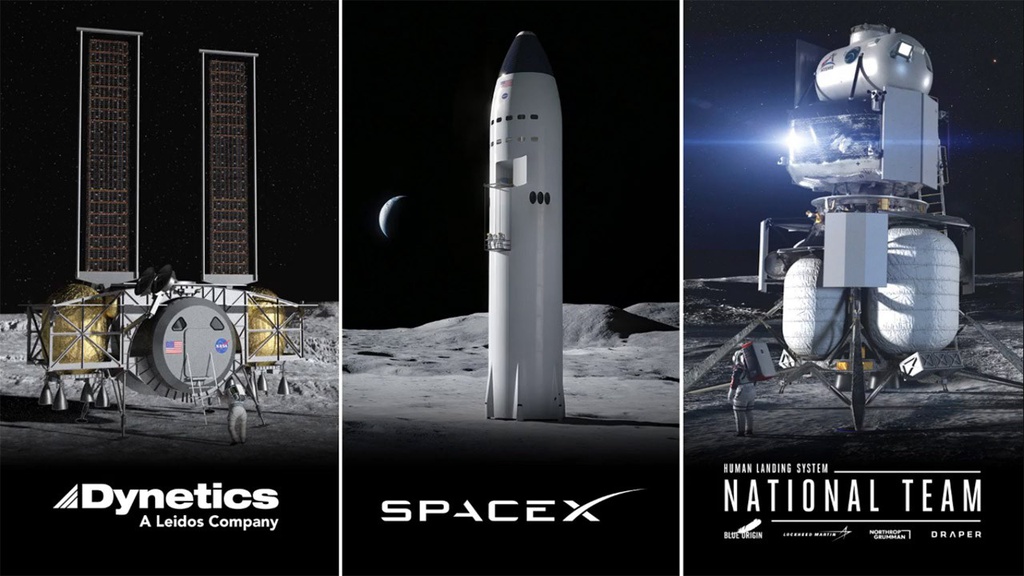
The Human Landing System is the final mode of transportation that will take astronauts to the lunar surface in the Artemis lunar exploration program. On early missions, the astronauts will live inside the pressurized crew cabin portion of the lander for up to a week.
In July 2019, NASA’s Marshall Spaceflight Center in Huntsville, Alabama, was designated to lead NASA’s Human Landing System (HLS) Program, the cross-center team responsible for the procurement of the rapid development and crewed demonstration of systems, designed and developed by American companies, that will carry the first woman and the next man to the surface of the Moon by 2024.
In September 2019, NASA asked American industry to propose innovative designs for a human lunar landing system through the NextSTEP-2 Broad Agency Announcement Appendix H procurement mechanism. NASA streamlined its partnering approach to empower industry to meet NASA’s goal of achieving sustainability at the Moon while also expediting lander development to meet the 2024 timeline.
NASA experts will work closely with these commercial partners to build their human landing systems, leveraging decades of human spaceflight experience and the speed of the commercial sector to achieve a Moon landing in 2024.
The HLS program also will perform advanced development and risk reduction activities, working in parallel on activities to better inform the program and the contractor on the 2024 mission and the maturation of systems necessary for the future sustaining architecture.
On April 30, 2020, NASA announced selection of three companies to begin development on the Artemis Human Landing System: Blue Origin, Dynetics, and SpaceX.

Click on the link below to learn more about The Human Landing System